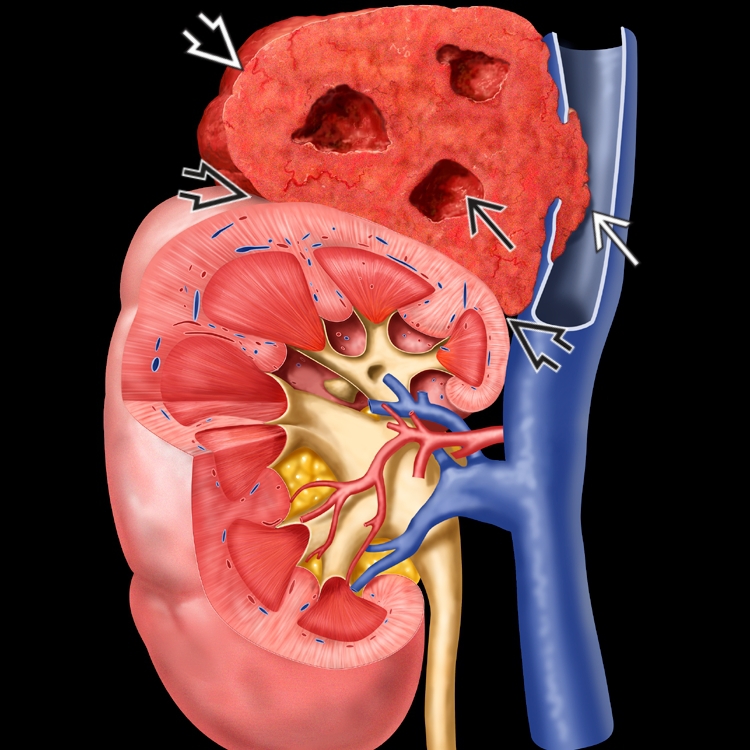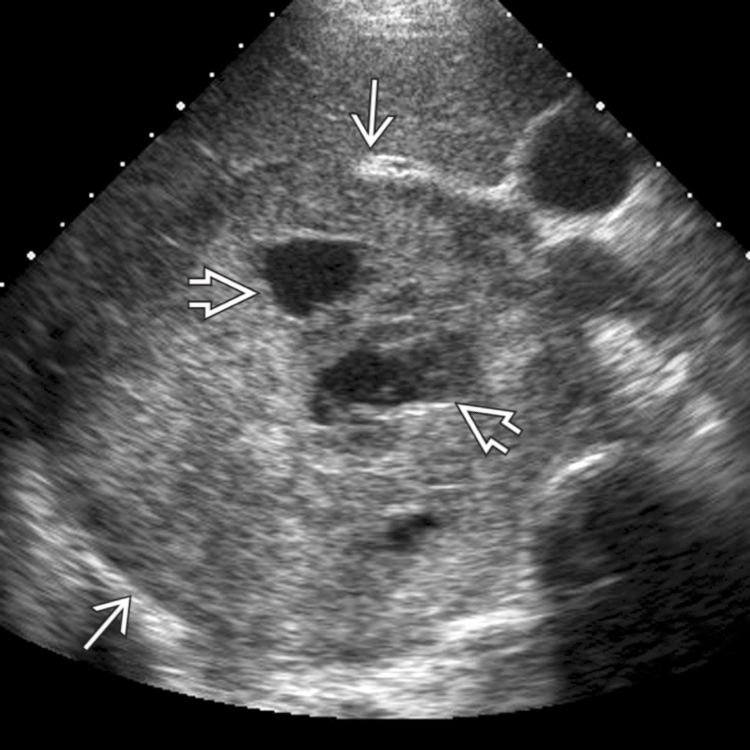KEY FACTS
Terminology
- •
Adrenal carcinoma
- •
Synonyms : Adrenocortical carcinoma; adrenal cancer
- •
Definition : Rare, aggressive tumor arising from adrenal cortex, often with local invasion and distant metastases
Imaging
- •
Ultrasound may be used for initial screening in patients with abdominal pain but offers limited ability to characterize or differentiate from other adrenal masses
- •
Large masses; average size: 9 cm; 70% > 6 cm
- ○
Heterogeneous, hypoechoic/anechoic areas (necrosis &/or hemorrhage)
- ○
Echogenic solid components; ± calcification
- ○
Local invasion: Inferior vena cava, kidney, liver
- ○
- •
Small tumors: Homogeneous, hypoechoic, similar to renal cortex
- •
Functioning tumors usually smaller (≤ 5 cm) than nonfunctioning tumors (≥ 10 cm) at presentation
- •
Invasion/occlusion of adrenal vein, renal vein, and inferior vena cava; ± intraluminal tumor thrombus
- •
Best imaging tool: CECT or CEMR
Top Differential Diagnoses
- •
Pheochromocytoma
- •
Adrenal metastases
- •
Neuroblastoma (in children)
- •
Adrenal hemorrhage
- •
Adrenal lymphoma
- •
Other adrenal tumors complicated by hemorrhage
- •
Myelolipoma with hemorrhage
- •
Ganglioneuroma
- •
Infection
- •
Adrenal hemangioma
Pathology
- •
Rare, aggressive tumor arising from adrenal cortex, often with local invasion
- •
Metastases to regional lymph nodes, liver, lung, bone
Clinical Issues
- •
Rare: < 0.2% of all cancers, slightly more common in women
- •
Bimodal distribution: < 5 years old (1st peak) and 30-50 years old (2nd peak)
- •
Associated syndromes: Cushing, female virilization, Conn, male feminization
- •
Definitive treatment (all stages): En bloc resection
Scanning Tips
- •
Rule out other more common diagnoses, e.g., adenoma, hemorrhage, neuroblastoma in child
- •
Inferior vena cava invasion (best depicted on MR) is crucial for surgical planning
 with areas of necrosis
with areas of necrosis  , tumor invasion into the inferior vena cava (IVC)
, tumor invasion into the inferior vena cava (IVC)  , and compression of the right renal upper pole
, and compression of the right renal upper pole  .
.
 represents adrenal cortical carcinoma. There were areas of necrosis
represents adrenal cortical carcinoma. There were areas of necrosis  .
.
 but none in the cystic necrotic areas
but none in the cystic necrotic areas  .
.
Stay updated, free articles. Join our Telegram channel

Full access? Get Clinical Tree








